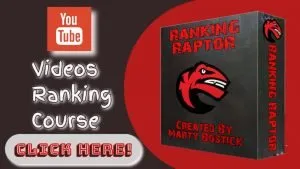
A landing page is a crucial element of any digital marketing strategy. It serves as the first point of contact between a potential customer and your business, and its primary purpose is to convert visitors into leads or customers. Unlike a homepage, which serves as a general introduction to your business, a landing page is specifically designed to prompt a specific action, such as signing up for a newsletter, downloading a free resource, or making a purchase. Understanding the purpose of a landing page is essential for creating an effective one that drives results. By focusing on a single call-to-action and eliminating distractions, a landing page can significantly increase conversion rates and ultimately contribute to the success of your marketing efforts.
A well-designed landing page should be visually appealing, easy to navigate, and optimized for conversions. It should also provide valuable information about your product or service and clearly communicate the benefits of taking the desired action. By understanding the purpose of a landing page, you can tailor its content and design to effectively engage your target audience and guide them towards the desired conversion. Whether you’re promoting a new product, generating leads, or driving sales, a well-crafted landing page can be a powerful tool for achieving your marketing goals.
Identifying Your Target Audience
Identifying your target audience is a critical step in creating a successful landing page. Understanding who your ideal customers are, what their needs and pain points are, and how they prefer to consume information is essential for crafting compelling copy and designing an effective user experience. By conducting thorough market research and creating detailed buyer personas, you can gain valuable insights into the demographics, behaviors, and preferences of your target audience. This information can then be used to tailor your landing page content and design to resonate with your ideal customers and drive conversions.
In addition to demographic information, it’s important to consider the psychographic and behavioral characteristics of your target audience. What are their motivations, values, and interests? How do they typically make purchasing decisions? By understanding these factors, you can create messaging and visuals that speak directly to your audience’s needs and desires. Identifying your target audience is an ongoing process that requires continuous monitoring and adjustment as market trends and consumer behaviors evolve. By staying attuned to the needs and preferences of your audience, you can ensure that your landing page remains relevant and effective in driving conversions.
Crafting Compelling Copy and Call-to-Actions
Crafting compelling copy and call-to-actions is essential for capturing the attention of your target audience and motivating them to take action on your landing page. The copy on your landing page should be clear, concise, and persuasive, highlighting the unique value proposition of your product or service and addressing the pain points of your audience. By using compelling language and storytelling techniques, you can create an emotional connection with your visitors and inspire them to engage with your brand. In addition to persuasive copy, a strong call-to-action is crucial for guiding visitors towards the desired conversion. Whether it’s a button prompting them to sign up, download, or buy, the call-to-action should be prominently displayed and clearly communicate the benefit of taking the next step.
When crafting copy for your landing page, it’s important to focus on the benefits of your offering rather than just its features. How will your product or service improve the lives of your customers? What problems will it solve for them? By addressing these questions in your copy, you can effectively communicate the value of your offering and compel visitors to take action. In addition to persuasive copy, it’s important to create a sense of urgency or scarcity in your call-to-action to motivate visitors to act quickly. Whether it’s a limited-time offer or a countdown timer, incorporating elements of urgency can increase the likelihood of conversion on your landing page.
Choosing the Right Visual Elements
Choosing the right visual elements for your landing page is crucial for capturing the attention of your audience and creating a memorable user experience. High-quality images, videos, and graphics can help convey the value of your offering and evoke an emotional response from visitors. When selecting visual elements for your landing page, it’s important to consider the overall aesthetic of your brand and ensure that the visuals align with your messaging and positioning. Whether you’re showcasing product features, customer testimonials, or lifestyle imagery, the visual elements on your landing page should support your key messages and enhance the overall user experience.
In addition to static images, incorporating video content on your landing page can be highly effective in engaging visitors and communicating complex information in a compelling way. Whether it’s a product demonstration, customer testimonial, or brand story, video content can capture attention and convey information more effectively than text alone. When choosing visual elements for your landing page, it’s important to consider the loading speed and mobile responsiveness of the content. High-resolution images and videos can slow down load times and detract from the user experience on mobile devices. By optimizing visual elements for fast load times and responsive design, you can ensure that your landing page delivers a seamless experience across all devices.
Optimizing for Mobile and Load Speed
Optimizing your landing page for mobile devices and fast load speed is essential for providing a seamless user experience and maximizing conversions. With an increasing number of consumers accessing websites on mobile devices, it’s crucial to ensure that your landing page is fully responsive and easy to navigate on smartphones and tablets. By using responsive design techniques and optimizing content for smaller screens, you can provide a consistent experience for mobile users and prevent them from bouncing due to poor usability. In addition to mobile optimization, load speed is a critical factor in retaining visitors on your landing page. Slow load times can lead to high bounce rates and decreased conversions, so it’s important to minimize unnecessary elements that could impact performance.
To optimize your landing page for mobile devices, it’s important to prioritize content hierarchy and simplify navigation for smaller screens. By using larger fonts, clear calls-to-action, and streamlined layouts, you can ensure that mobile users can easily find the information they need and take action on your landing page. In addition to mobile optimization, load speed can be improved by compressing images, minifying code, and leveraging browser caching. By reducing the file size of visual elements and optimizing code structure, you can significantly improve load times and provide a more seamless experience for visitors across all devices.
A/B Testing and Analytics
A/B testing and analytics are essential tools for optimizing the performance of your landing page and identifying opportunities for improvement. By testing different variations of copy, design, and call-to-actions, you can gain valuable insights into what resonates most with your audience and drives the highest conversions. A/B testing allows you to compare two versions of a landing page against each other to determine which one performs better in terms of engagement and conversion rates. By systematically testing different elements of your landing page, such as headlines, images, button colors, and form fields, you can identify the most effective combination of elements that drive results.
In addition to A/B testing, analytics provide valuable data on visitor behavior and conversion patterns on your landing page. By tracking metrics such as bounce rate, time on page, click-through rate, and conversion rate, you can gain insights into how visitors are interacting with your landing page and where they may be dropping off in the conversion process. This data can then be used to make informed decisions about how to optimize your landing page for better performance. By continuously monitoring analytics data and conducting A/B tests, you can refine your landing page over time to maximize its effectiveness in driving conversions.
Implementing SEO Strategies for Increased Visibility
Implementing SEO strategies on your landing page is essential for increasing its visibility in search engine results and driving organic traffic to your site. By optimizing on-page elements such as meta titles, descriptions, headings, and image alt tags with relevant keywords, you can improve the likelihood of your landing page ranking higher in search results for relevant queries. In addition to on-page optimization, it’s important to create high-quality content that provides value to visitors and encourages them to engage with your brand. By incorporating relevant keywords naturally within your content and providing valuable information that addresses the needs of your target audience, you can improve the relevance and authority of your landing page in the eyes of search engines.
Off-page SEO factors such as backlinks also play a crucial role in increasing the visibility of your landing page in search results. By earning high-quality backlinks from reputable websites within your industry, you can improve the authority of your landing page and signal its relevance to search engines. In addition to backlinks, social signals such as likes, shares, and comments on social media platforms can also contribute to the visibility of your landing page in search results. By implementing a comprehensive SEO strategy that encompasses both on-page and off-page factors, you can increase the likelihood of your landing page ranking higher in search results and driving organic traffic to your site.
In conclusion, creating an effective landing page requires careful consideration of its purpose, target audience, content, design, mobile optimization, A/B testing, analytics tracking, and SEO strategies. By understanding these key elements and implementing best practices in each area, you can create a high-performing landing page that drives conversions and contributes to the success of your digital marketing efforts. With continuous monitoring and optimization based on data-driven insights, you can ensure that your landing page remains relevant and effective in engaging visitors and motivating them to take action.






